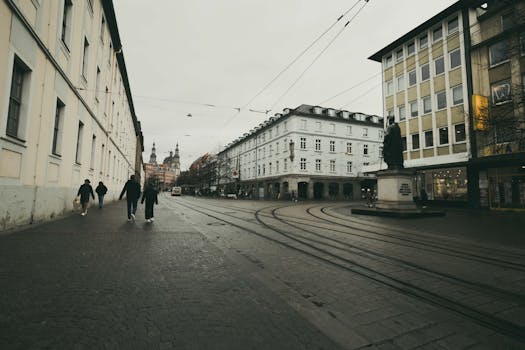
Urban Green Spaces: The Future of Outdoor Living in European Cities by 2025
Urban Green Spaces: The Future of Outdoor Living in European Cities by 2025 is a topic of great importance, as it focuses on creating sustainable and livable cities for the future. As the world becomes increasingly urbanized, it is essential to prioritize green spaces in city planning to ensure a high quality of life for citizens.
Introduction to Urban Green Spaces
Urban green spaces refer to areas in cities that are dedicated to nature, such as parks, gardens, and green roofs. These spaces provide numerous benefits, including air purification, noise reduction, and climate regulation. They also offer opportunities for recreation, socialization, and relaxation, making them essential for both physical and mental health.
Benefits of Urban Green Spaces
The benefits of urban green spaces are numerous and well-documented. Some of the most significant advantages include:
- Improved air quality: Urban green spaces can help remove pollutants from the air, improving respiratory health and overall well-being.
- Increased biodiversity: By providing habitats for plants and animals, urban green spaces can help maintain ecosystem services and promote biodiversity.
- Climate regulation: Green spaces can help regulate the urban microclimate, reducing the urban heat island effect and mitigating the impacts of climate change.
- Recreation and socialization: Urban green spaces provide opportunities for outdoor activities, socialization, and community engagement, promoting a sense of belonging and connection among citizens.
European Cities Leading the Way
Many European cities are at the forefront of urban green space design and implementation. Cities like Copenhagen, Stockholm, and Vienna have incorporated extensive green spaces into their urban planning, creating sustainable and livable environments for their citizens. These cities have demonstrated that it is possible to balance urban development with environmental protection and social well-being.
Challenges and Opportunities
Despite the many benefits of urban green spaces, there are also challenges to be addressed. Some of the key challenges include:
- Urbanization and land scarcity: As cities continue to grow, finding space for green spaces can be a significant challenge.
- Financial constraints: Creating and maintaining urban green spaces can be costly, requiring significant investment from municipal governments.
- Community engagement: Encouraging community involvement and participation in the design and maintenance of urban green spaces can be essential for their long-term success.
Conclusion
In conclusion, urban green spaces are a vital component of sustainable and livable cities. By prioritizing green spaces in city planning, European cities can promote environmental protection, social well-being, and economic development. As we look to the future, it is essential to continue innovating and investing in urban green spaces, ensuring that they remain a central part of urban planning and development.






